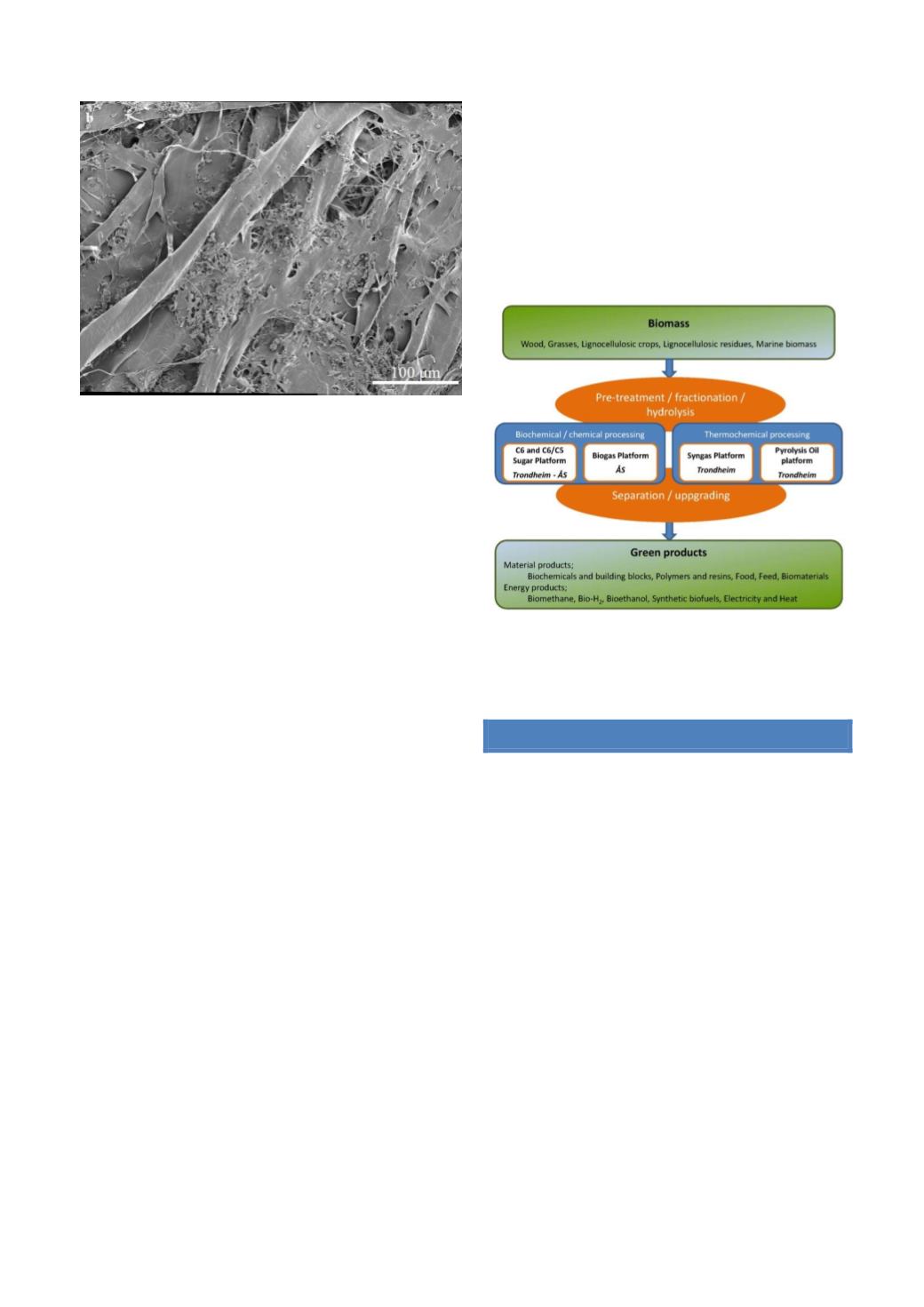

Department of Chemical Engineering
Annual Report 2015
34
Figure: A paper surface with ground calcium carbonate
that has been partly agglomerated by nanocellulose.
(Photo: V. Ottesen, NTNU)
A main focus is to establish new research projects.
Currently we work in several research projects funded
from the Nano 2021 program of NFR, Petromax 2. In
2013 the NORCEL project was started with Kristin
Syverud (PFI/NTNU) as project manager. The project
aims at developing tailored nanocellulose materials for
application in medicine, papermaking and oil production.
Vegar Ottesen and Silje N. Molnes (UiS) are PhD fellows
in this project.
During 2014 one new research project, NanoMBE was
established together with Liyuan Deng from the
Environment and reactor group at IKP as project
manager and PFI as the third project partner. The project
has three PhD students and aims at developing improved
polymer-nanocomposite membranes for gas separation.
Jonathan Torstensen is a PhD fellow in this project.
During 2015 the project “Green high performance
systems for Enhanced Oil Recovery” was started. The
project is led by PFI. Reidun Cecilie Grønfur Aadland work
with nanocellulose in enhanced oil recovery (EOR)
The related project “Development of high-performance
viscosifiers and texture ingredients for industrial
applications based on Cellulose Nanofibrils (CNF)” was
also started in 2015.Ragnhild Aaen is a PhD-student in
this project, working on rheological properties of
cellulose nanofibrils
We are also a partner in the Norwegian biorefinery
laboratory
project
(NorBioLab:
http://www.pfi.no/Biorefinery/Biorefinery-Projects/NorBioLab/) which is a national laboratory for
biorefining. This involves the development of processes
for sustainable conversion of Norwegian land and sea-
based biomass into new, environmentally friendly
biochemicals, biomaterials and bioenergy products. This
infrastructure gives us new research possibilities for
converting lignocellulose to chemicals, materials and
fuel.
Figure: The equipment in the NorBioLab project covers all
the most relevant conversion routs from biomass go
green products.
TRENDS
During the last 10 years the focus of our research has
shifted from exclusively pulp and paper to including
research on bio-fuel, nanocellulose and bio-composite
materials. Cellulose based particles in film and composite
materials can give better oxygen barrier and mechanical
properties to the materials. An overall goal in this
research is replacing non-renewable packaging materials
(plastics, aluminium foil) with cellulose based
(renewable) materials. The research and application
areas for nanocellulose have been much extended. The
group is active in research on production, modification,
application as filter material, barrier material, wound
dressing, membrane materials and additive for oil
production.
Biofuel manufacturing processes are regarded as a first
stage in the development of biorefinery processes for
the manufacture of energy, chemicals and materials
from renewable resources. Together with PFI we are
conducting research on the use of wood and agricultural


















